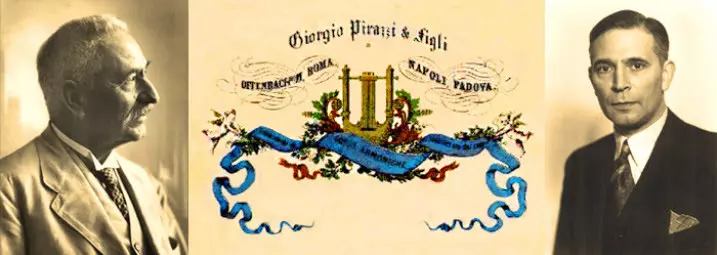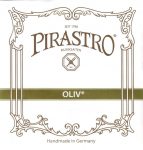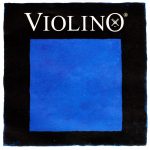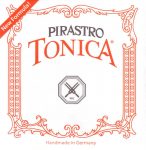Pirastro Strings
- Home
- Pirastro Strings
Pirastro strings is a long established company that produces strings for musical instruments with its origins stretching back to 1798. The company was started in Italy by Giorgio Pirazzi an Italian string maker. Giorgio Pirazzi was born in Domodossola, Italy in 1766. He was the son of a miller but was apprenticed at the age of fourteen to string makers based in both Napoli and Roma.

After Giorgio completed his training, he returned to his home in Piedmont near Lake Maggiore. There were Italian families who would come home to Lake Maggiore for holidays after achieving success in Frankfurt in Germany. Pirazzi was invited to visit his new friends in Frankfurt and ended up moving there permanently. Life for immigrants in Frankfurt was difficult as the members of the Guilds declined to allow admission to new craftsmen in order to protect their own incomes. However, the Count of Isenberg encouraged the Italians to live in his own county. Offenbach was wealthy and located just south of Frankfurt. Pirazzi settled in Offenbach and he was subsequently invited to establish a factory on the land of a prosperous landowner and he could then finally practise his craft.
The running of the company passed down to Giorgio’s son Joseph and then to his son Emil. Both Joseph and Emil had other careers that ran in parallel to working in the family business. Joseph was a journalist, poet and local politician. Emil had similar interests to his father and was a journalist, poet, playwright and politician.
Pirazzi’s string making company expanded gradually. By the 1890’s company management had been handed down to Gustav Pirazzi. Gustav invited his friend, Theodor Strobel to become his business partner. Gustav and Theodor took the first four letters of their surnames and combined them to create the new brand name Pirastro. After Theodor died in 1922, Gustav’s son Herman ran the firm until he died in 1976.
In the early 1970’s, Pirastro experienced an increase in demand for their strings. This led to the founding of a second production site in Germany. In 1992, Herman’s daughter Eva Pirazzi along with her husband, Volker Muller-Zierach became the new heads of the company. After finishing their education and gaining experience working in other firms throughout Europe, their children Annette and Henning are also now working for Pirastro. Since Annette and Henning joined the family business there have now been six generations of Pirazzi’s running Pirastro.
Pirastro currently employs 150 staff over two locations. Pirastro strings are manufactured on computerised machines designed by the company. The company has a street named after it in Offenbach.
Pirastro makes strings from a variety of materials for violin, viola, cello and bass. The materials used include nylon, gut, steel and polyetheretherketone (PEEK) which is a high temperature resistant thermoplastic. Pirastro also produces matched rosins for their strings.
Pirastro Violin Strings
Pirastro gut strings: These include Passione, Oliv, Eudoxa and Chorda. All of Pirastro’s gut strings are made with a sheep gut core which is wound and polished by hand as is traditional.

Oliv are premium gut strings with a brilliant sound that provides complex, rich overtones. They have a relatively quick response compared to other gut strings. The Oliv E string is gold plated and has an exceptionally clear and brilliant sound. Like other gut strings they need time to settle.
Eudoxa strings provide a warm, mellow and well-balanced tone and provide a diverse range of sounds. They have low string tension and are very comfortable for the left hand. Before the development of synthetic core strings, Eudoxa was one of the most popular violin strings. They take longer to settle and need more frequent tuning than the modern synthetic core strings and also have a slower response time. Eudoxa provide a lovely traditional gut sound and are particularly appropriate for Baroque music.


Passione strings are a relatively new type of gut strings where the gut has been stabilised to improve settling time and frequency of tuning needed. They have core sound that is full, round, warm and clear with complex overtones. They have brilliant tone similar to Oliv although the tone is somewhat less complex but with the advantage of better tonal stability. These incredible strings have been designed to combine the favourable qualities of synthetic core strings with a true traditional gut sound that has good projection.
Chorda strings are plain gut strings that provide the desired sound for an authentic Baroque performance. Chorda E, A and D strings are plain gut. The G string is wound as an unwound G string would have a very slow response time. The E string is steel and has a brilliant and powerful sound. Chorda strings have a very low string tension providing excellent comfort for the left hand. As they are plain gut, allow plenty of time for them to settle.

Pirastro synthetic gut strings: These include Evah Pirazzi, Obligato, Violino, and Tonica. Apart from Tonica which has a nylon core, this range of synthetic gut strings have a core made of a new synthetic material that Pirastro developed in conjunction with their supplier. The synthetic core is a multifilament fibre and this material is exclusive to Pirastro. It provides an extensive range of sounds and wide dynamic response. This family of strings is also stability with regards to changes in temperature and humidity.

Evah Pirazzi strings are named after Eva Pirazzi. “Evah’s” are modern synthetic core strings that are very much a favourite amongst many violinists. The sound of these strings are incredibly powerful with an exceptional range which is great for soloists. Their sound is warm, intense and brilliant. They are known for their playability and remarkable response for all levels of dynamics. They need to be changed at regular intervals to maintain their beautiful sound. These strings best suit the advanced student and professional players and work best on high quality instruments.
Evah Pirazzi Gold strings have modern synthetic multifilament fibre. The tone is brilliant with a golden full-bodied sound throughout the register. They offer a wide palette of sound colours. Evah Gold give an exceptional response in dynamic ranges from pianissimo passages and are powerfully sonorant when played close to the fingerboard or using a heavy arm for bowing. The gold G has been wound in pure gold and has a round full tone. The silver G has a more brilliant tone to the gold. The stainless steel E offers a smooth, refined sound even at high registers. In comparison to Evah Pirazzi the tone is said to be warmer. They settle very quickly even more so than Evah Pirazzi and Obligato.


Violino strings have a warm full and smooth tone. They work well with those student instruments that tend to have a bright and hard tone. They do not have the projection of Evah Pirazzi, but have a sweetness of tone that makes up for this. Their low tension provides a soft and gentle feel for the left hand.
Tonica strings have nylon core and high quality winding. They are mid priced compared to Evah Pirazzi and so are budget friendly while providing a lively and round sound with rich overtones and a clear and balanced timbre. They allow a large amount of dynamic modulation. They are considered to be similar to Thomastik Dominant strings and are definitely worth trying for Dominant fans.

Pirastro steel core strings: these include Piranito and Chromcor

Piranito strings have a wound band over a steel core. They are popular budget friendly strings for student instruments and easy to play. Piranito have a bright sound without harshness
Chromcor strings have a single filament steel core that has been wound with chrome steel. These are bright strings that are recommended for student instruments particularly small ones. They produce a clear and brilliant sound and have more warmth than Piranito strings. Their tonal volume is large and they have an easy response. As they have been wound with chrome steel they have long lifespan. There is also the non corrosive advantage of chrome steel and no impact from sweaty hands. They are particularly suitable for fiddlers and are great for amplified and electric violins.

